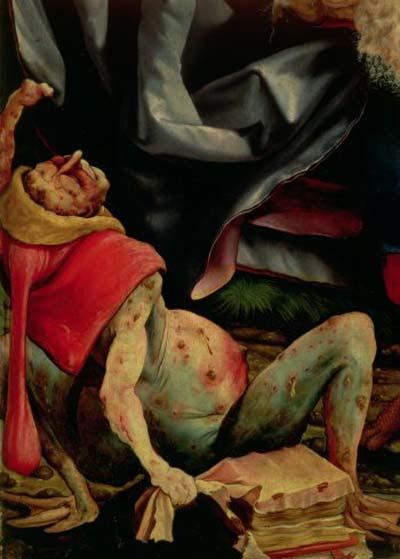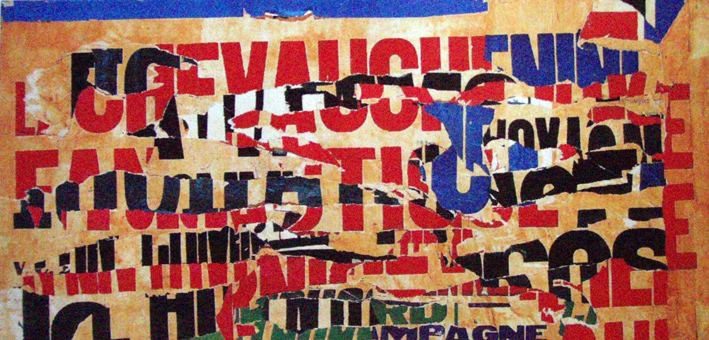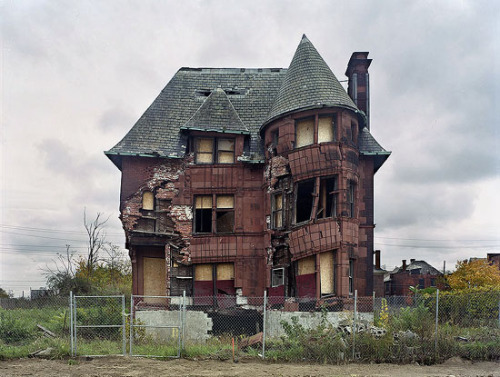Sam Taylor Wood - 'A Little Death' 2002
Jan Lievens (Dutch, 1607–1674), 'Still Life with Books', ca. 1627–1628.
Sam Taylor Wood 'Still Life' 2001
Sam Taylor Wood is an artist, photographer and film maker. Her 2001 Film/animation ‘Still Life’ has the visual look of a 17th Century Dutch still life. Sequences of still photographs are taken over a period of time to show the fruit slowly decaying. This is shown as a piece of video art in a gallery space - it is almost displayed like a painting on the wall. It is similar to time lapse photography used to capture the growth of a plant - who move at a completely different pace to ourselves.
Nicholas Nixon 'The Brown Sisters 1975-2007' 2/16/09
Nicholas Nixon 'The Brown Sisters 1975-2007'
Time has a natural effect on the world around us. Time is a central element of Photography - at it purest form it can be the length of time a shutter is left open for. On another level it can record time - freezing it forever. We cannot see time - we invented clocks to give form to this abstract concept. However, we can see the effects of time - the sun moving over head, a worn step, a landscape eroding or the aging effect on humans. We notice people growing old mainly by looking back at old photographs. The Photographer Nicholas Nixon has Photographed his wife and her three sisters ever year since 1975. He created a Topograhic series. They are informal portraits but the women are always stood in the same order. If you look at the photographs chronologically the change is subtle. However, if you look at a photograph from the 1970's and compare it to a recent one the change is dramatic. Soft skin and features age and show the marks of a life's experience. Individuals faces can still be recognised but, at the same time, can change dramatically.
Rembrandt Self Portrait 1628
We take it for granted that we can document our lives. It is easy for us to create a photographic image of ourselves. Before the invention of photography all portraits had to be drawn by hand. If you couldn't draw you would have to pay an artist. This meant only the rich and successful were immortalised in an image. Rembrandt made self portraits from an early age and left one of the few pre-photographic documents of a person growng old.
Rembrandt, “Self-Portrait in Painter's Costume.” 1660-62Over thirty years separate these two images by Rembrandt and show him transform from a young ambitious artist to an old master. He made a unusually large amount of self portraits that show him in various guises from a mischievous clown, respectable member of society to a lone artist. You can see these varied portraits here and here.
Claude Monet’s haystack.
A group of Monet's Haystacks
Claude Monet was a impressionist painter who was fascinated by light. The warmth of the early morning light, the strong constrast of midday, the golden hour when the sun begins to set, twilight or the diffused light on a cloudy day. When he visited London he didn't see dullness, instead he was amazed by all the different shades of grey and white. During the harvest season of 1890 -91 he returned to the same hay stacks and painted them on site. The same ordinary subject is transformed by observing how the light changes at different times of day and year. Although technically a series of images there is a sense of time passing and the images seem to follow a natural sequence.
Matthias Grunewald - 'Isenheim Altarpiece' detail of Christ's
Isenheim Altarpiece painted by Matthias Grunewald's 1515
It is the 16th Century and you are a patient at a hospital for Plague victims. Your skin is discoloured and is covered in boils, scars and lesions. You have come to chapel to pray and you look up at the altarpiece and you see Christ before you.
Detail of Christ's hand
Detail - Christ's foot
The Crucifixion has never been so grotesque. Christ has livid green flesh - he is dyeing and he is suffering - he is almost human. You know his pain and he knows yours. It is a gruesome scene full of decay, blood and rotting flesh - a contemporary equivalent might be a Zombie - the living dead.
Still from 'Dawn of the Dead' 1978 by George A. Romero
Matthias Grunewald - 'Isenheim Altarpiece' detail of Christ's head
Why did Matthias Grunewald paint such a dark image. Grunewald lived in dark times and over the previous few hundred years The Black Death, followed by famine, had wiped out a third of the population. In this world the role of the artist wasn't to create beauty but to console (why we are fascinated by the grotesques I do not know). The altarpiece was in sections (each section was made up of various images) and different sections would have been seen at different times of the year. This section, the first section, shows Christ's death. This was made for the prays of patients at the hospital. These images said - Christ suffered like you - but don't give up hope. Pray to the image and you can be saved.
In the first panel Christ is dying.
In the second panel Christ is resurrected - his arms are raised and his skin is pure. He is reborn and the whole scene speaks of hope and redemption. The image says to the viewer that this is the power of Prayer. Before he had livid green flesh but now his skin glows. To our contemporary eyes it is like an advert for a miracle skin product.
We once had belief and prayer. We now have surgery and debt. We once wanted redemption we now want the celebrity look. Grunewald stand between the new world of the renaissance and the old world of
medieval piety and the gothic style. Ultimately the people win out and the old wold of myth, demons and ghouls wins out.
Matthias Grunewald, details from the third panel, Isenheim Altarpiece, 1510-15
De-coll/age was a term invented by Wolf Vostell after he saw (a version of) it used in a newspaper article to describe the crash of an airplane that had taken place at takeoff.
Howard Bond’s black-and-white photographs abstract the rusted metal, peeling paint, and torn vinyl of weathered cars into elegant formal designs. Selective framing that eliminates context and relatively flat picture planes make his subjects sometimes resemble color field paintings, sometimes landscapes, but they always bear witness to the beauty that can be found even in unlikely places. Pared down to essentials, these striking pictures are nonetheless rich with texture and fine detail that reward a closer look.
'As the master Boticelli stated, such a study is useful because just by throwing a sponge soaked with various colors against a wall to make a stain, one can find a beautiful landscape. If it is true that in this stain various inventions can be discerned, or rather what one wants to find in it, such as battles, reefs, seas, clouds, forests and other similar things, then surely, this is like the ringing of bells in which one can understand whatever one wants to. But, even though these smears of color provide you with inventions, they also show you that they do not come to represent anything in particular.
Arman 'Accumulation of electric razors embedded in plexiglas' 1968
Arman was a European pop artist who collected the same type of object and placed them inside glass containers. This act of taking what seems to be rubbish is exactly what is do in Museums - by taking an object out of its original context and placing it in a cabinet the viewer sees that object in a new way. Arman's objects seem to be relic's from another age and as we get further away (in time) from
Arman's work the objects seem stranger and more unusual. The second world war had still left scars on Europe and Arman started by going through the ruble of derelict building to collect these everyday objects. In many ways they are both relics but also an example of the everyday amassed and becoming strange.
Irving Penn 1975
Irving Penn 'Cigarette 17' New York, 1972
Fragment of a mixing bowl -Greek, South Italian, Late Classical Period, about 380–370 B.C.

Irving Penn - New York 1972
Irving Penn is mainly famous as a top fashion photographer and his images are the height of style and elegance. However, he also managed to create a wide range of images and amongst the most curious are his images of New York rubbish. Close up shots of Cigarette butts and empty carton's are reduced to pure black and white, with a white background and in fine detail. A lot can be learnt from the remnants and artifacts of a society. These are ours - magnified.
'Cigar Stub #1', Graeme Mitchell 2008
trash and photo reference
trash and photo reference
JMW Turner 'Tintern Abbey, looking towards the east window' (1794)
Artist and photographers have been drawn to ruins - buildings where nature has reclaimed the work of previous cultures.
J.M.W. Turner 'Tintern Abbey' England (watercolour) 1795
This watercolour by JMW Turner shows this tradition. Here he has captured the details of the famous ruins of this twelfth-century Cistercian Abbey in Monmouthshire, which he visited in 1792, and again in 1793. Tourists of the time were as much impressed by the way that nature had reclaimed the monument as by the scale and grandeur of the buildings. Turner's blue-green washes over the abbey's far wall blend stone and leaf together, and on the near arch the spiralling creepers seem to make the wind and light tangible.
Detroit by Yves Marchand and Romain Meffre
Detroit is known as Motor city and is famous for car manufacture and music (see Motown - Motor City). Detroit became prosperous but has been in rapid decline. Many of its grandest buildings are derelict and create a faded grandeur. French photographers Yves Marchand and Romain Meffre have documented Detroit's beautiful, horrible decline. The image above is 'Lee Plaza Hotel' - Once one of the most luxurious residential hotels in Detroit, Lee Plaza closed in the 1990s.
Yves Marchand and Romain Meffre - Plant
Luxury-auto maker Packard produced its last car here in 1956. On their website, the photographers write -
"Ruins are the visible symbols and landmarks of our societies and their changes ... the volatile result of the change of eras and the fall of empires. This fragility leads us to watch them one very last time: to be dismayed, or to admire, it makes us wonder about the permanence of things."
This is a photograph of a photograph and the illusion is broken by the tear in the paper. The photographers have focussed on the wall showing the effect of time and nature on a once prosperous city. The same drive to document this decay is same need that Turner had when painting Tintern Abbey.
Walker Evans 'Torn Movie Poster' 1931
Here is a photograph of a torn movie poster by Walker Evans. Evans would often appropriate the work of others and take a photograph of a photograph. Layers of life and culture build up only to be replaced by the latest trend. These images are ephemeral - destined to be lost and Evans has captured it forever. These images have the look of Decollage.
In the early 1950s, Mimmo Rotella began to rip posters away from the walls of outdoor hoardings in Rome, and used them to create elaborate collages. Many of these were film posters but he also used advertisements for appliances and other goods, so that his works became a commentary on the post-war consumer boom. In the studio he would mount the poster fragments onto canvas, rearranging the pieces into new compositions but also stripping away further layers to accentuate their distressed appearance.Mimmo Rotella
This is an example of Decollage (a French word meaning literally to unstick). The term is generally associated with the Nouveau Réalisme (new realism) movement. Nouveau Realism often found beauty in the everyday and was a poetic recycling of reality. In the context of Nouveau Réalisme it meant making art works from posters ripped from walls, exhibiting them as aesthetic objects and social documents.Jacques VILLEGLÉ
Jacques Villegle is another key decollage artist. Found objects, ripped posters, radical collages are all used in the New Realism movement of the early 1960s. Décollage is the opposite of collage; instead of an image being built up of all or parts of existing images, it is created by cutting, tearing away or otherwise removing, pieces of an original image.De-coll/age was a term invented by Wolf Vostell after he saw (a version of) it used in a newspaper article to describe the crash of an airplane that had taken place at takeoff.
Howard Bond - 'Car Hood I, Ontario', 1984
Howard Bond - Car Hood III, Ontario, 1984
Howard Bond’s black-and-white photographs abstract the rusted metal, peeling paint, and torn vinyl of weathered cars into elegant formal designs. Selective framing that eliminates context and relatively flat picture planes make his subjects sometimes resemble color field paintings, sometimes landscapes, but they always bear witness to the beauty that can be found even in unlikely places. Pared down to essentials, these striking pictures are nonetheless rich with texture and fine detail that reward a closer look.
Brett Weston - 'Cracked Paint' 1955
Brett Weston - 'Peeling Paint, Japanese Characters' 1970
LEONARDO DA VINCI - from the "Treatise on Painting"
In this quote Leonardo Da Vinci considers the stains and marks to be found in walls - like the flames of a fire or the clouds in the sky we can what we choose. It also shows that a wall, stain or mark is never what it seems.
Alec Soth 'Bonnie with a portrait of an angle'
In this Image Alec Soth's subject believes she can see an angle in a photograph of a cloud.
Brett Weston 'Broken Window with Figures'
Brett Weston has seen a figure in these broken window frames.
Brett Weston
Peeling paint, a worn surface, the effect of nature on the man made - these are all element of Brett Westons work. Brett Weston was the son Of Edward Weston - one of the most famous photographers in the history of photography. Brett Weston's work does owe a debt to his fathers - the use of crisp black and white, creating abstraction out of the everyday. However, there is a simple beauty to these images and they show a sensitivity to the visceral pleasure to be had by the eye. To see beauty in the old and decayed isn't new to photographers - but photography allows us to capture these sections of the world in a way that seems more poetic than paint. A similar beauty can be found in faded renaissance frescoes where the pigment, painted directly onto the wall, has faded and flaked creating a pastel effect.
Piero della Francesca - 'Madonna del Parto' in Monterchi, Sansepolcro. 1467.
Brett Weston 'Doorway, Mexico' 1970
Yves Marchand and Romain Meffre 'Livingstone House'
Constructed in 1893 in the once elegant Brush Park neighborhood, this home, designed by architect Albert Kahn, was moved from its original location several years ago by preservationists who hoped to maintain it. It was demolished a year later.












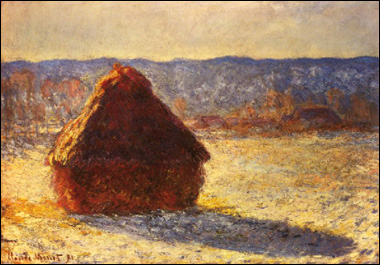

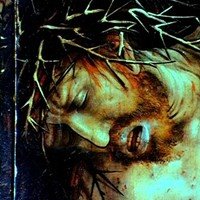


+5.jpg)




